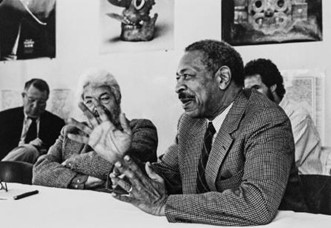2 Charles Long’s Creation Myth Types

Scholar and religious historian Charles H. Long defined five main types of creation myths in his 1963 book Alpha: The Myths of Creation. These five myth types are helpful when we compare cosmic myths from different cultural traditions. The five creation types outlined below describe common motifs from stories around the world. As you read examples of creation myths, try to determine which myth type best fits the story.
Creation ex nihilo
Literally “creation from nothing,” in this type of myth, creation occurs though the thought, word, dream or bodily secretion of a deity.
Example: Egyptian creation myth: “The Word came into being. All things were mine when I was alone.” (R.T. Rundle Clark, Myth and Symbol in Ancient Egypt, p. 77)
Creation from Chaos (Cosmic Egg)
In this type of creation, some kind of splitting (such as the cosmic egg) or ordering of primordial chaos results in creation.
Examples: Cosmic Egg from the Chinese tradition (note: China has many early creation myths); Hesiod’s Theogony
World Parent
This type of creation results from union, separation, division, or sacrifice of primordial parents.
Examples: Mesopotamia and the Enuma Elish; the Prose Edda (Norse)
Emergence
In this type of myth, an opening in the earth leads to creation.
Example: Native North America “Goddesses and Emergence”
Earth-Diver
A diver sent by the creator, usually a bird or amphibian, dives into the seabed through the primordial waters to bring up mud that becomes land.
Example: Native North American “Star Woman and the Earth Divers”
Deus Faber
American anthropologist and folklorist Marta Weigle added an additional category, deus faber (maker god), describing creation that was crafted by a deity or two creators working with or against each other.“
Charles Long’s Creation Myth Types” by Liza Long is licensed CC BY 4.0

